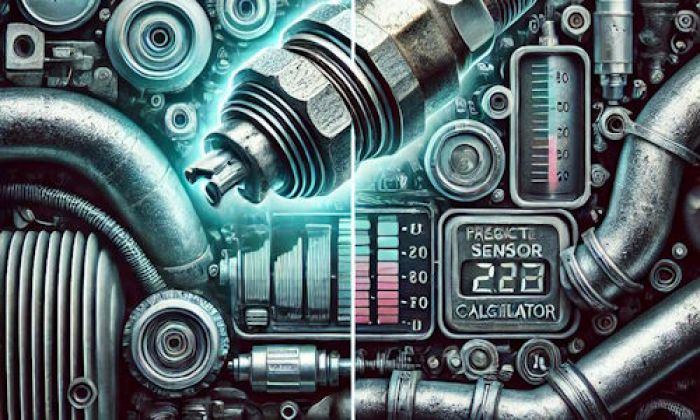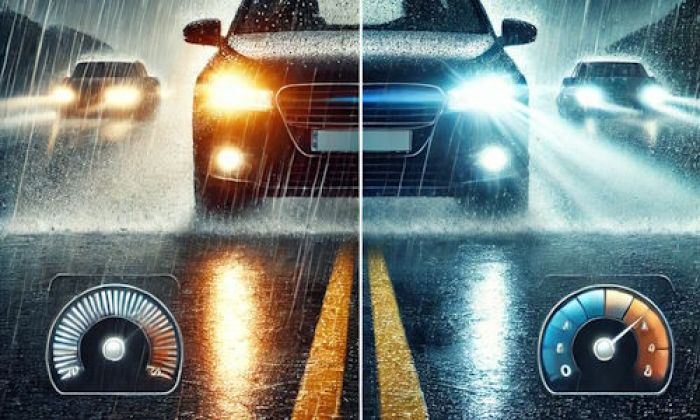At present, the market is swamped with many types of all-wheel-drive (AWD) systems offered by different automakers, but one of the standouts so far is the BMW xDrive. The technology was ahead of its time back when it was introduced in 2003, and over the years, it has undergone several improvements to keep it relevant in the highly competitive landscape of the automotive industry.
The xDrive surely offers many advantages for BMW drivers but that does not mean that it is free of any issues. This begs some questions about the reliability of the system. So, in this article, we will talk about the tech and evaluate its longevity based on the official statement of its maker and the actual experiences of its users.
.jpg)
About the BMW xDrive System
In a nutshell, the BMW xDrive is a permanent all-wheel drive system that uses sensors to monitor the traction and grip of each individual wheel. If one or more wheels start to slip, the xDrive will automatically redistribute power to the wheels with the best grip.
This helps a lot in improving traction and stability, especially on slippery or uneven surfaces. At its default setting during normal driving conditions, the system delivers 40 percent power to the front wheels and 60 percent to the rear.
Unlike most all-wheel drive systems that utilize hydraulic technology, xDrive employs a multi-disc clutch that is electronically controlled, which is lighter and has a faster rate of power redistribution.
BMW's Dynamic Stability Control (DSC) system of software and sensors can send nearly 100% of the engine's power to either axle under severe circumstances in about 0.1 seconds. This procedure is continuously monitored and adjusted by the system on the fly depending on the prevailing road conditions.
On BMW performance variants, xDrive may be configured to distribute power primarily to the rear wheels, shifting it only when there is a wheel slip. This ensures that the vehicles can handle the enormous power and torque outputs being supplied today while simulating the traditional rear-wheel drive driving qualities for which BMWs were known.
Likewise, the xDrive equipped in more potent BMW models is complemented by Dynamic Performance Control, which uses the electronically controlled clutch plates to accelerate the wheel in opposition to the one that is spinning. To aid the spinning wheel in regaining grip, it works in harmony with the DSC system that brakes the vehicle.
The xDrive can benefit drivers in several ways. First, it can help improve the grip and steadiness of a vehicle, especially on slippery or uneven surfaces. Second, it can help reduce wheel spin and skidding. Third, it can help improve fuel economy by distributing power to all four wheels more efficiently. Finally, it can help improve the overall driving experience by providing a smoother, more confident ride.
BMW xDrive Reliability
BMW is known for the top-notch performance of its vehicles. However, it has definitely tanked in rankings when it came to reliability. Over the years though, the Bavaria-based company has taken a great stride in addressing them.
As for the xDrive, it seems there are still many things that need to be resolved in terms of its reliability as various consumer reports have regularly given vehicles equipped with it scores ranging from 2.0 to 2.5 out of 5 or from average to slightly above average in various rating platforms and known automotive review sites.
Some analysts think that some of the low scores given by unsatisfied owners tend to be influenced by the maintenance costs associated with BMW autos in general. On average, the annual maintenance cost for BMW cars is roughly $1,000. The figures can easily balloon up for the high-performance models of the brand.
On the side of BMW though, it promises up to 200,000 to 250,000 miles for its xDrive-equipped vehicles. The numbers come with the consideration that the vehicle is properly maintained and driven conservatively. There have been problems, however, that may occur around the 100,000-mile mark concerning the xDrive.
Most Common Problems Reported by BMW xDrive Users
Based on reviews, forums, and reports dedicated to BMW vehicles, the following are the most common complaints linked with the xDrive system:
1. Bad Fuel Economy
This is not a problem per se, but rather a major trade-off that one must consider when choosing AWD over front-wheel drive (FWD) or rear-wheel drive (RWD) vehicles. Usually, this is an issue raised by owners who are either new to AWD or those who have been previously used to driving either FWD or RWD units.
The main reason why BMW xDrive models tend to have lower fuel economy than two-wheel drive models is the added weight and drag of the extra-driven wheels. The xDrive system also adds a bit of friction, which contributes to the lower fuel economy.
In addition, the xDrive system engages the front wheels more often than the rear wheels, which can cause the engine to work harder and use more fuel. But then again, the xDrive system does offer some advantages in terms of traction and handling, so it is up to the individual driver to decide if the trade-off in fuel economy is worth it.
2. Too Much Vibrations
There are numerous potential causes of strong vibrations from the BMW xDrive system. One possibility is that the drive shafts are unbalanced or damaged. Another possibility is that the differential is not properly lubricated. Additionally, worn suspension components or tires can cause vibrations.
Once the drive shafts are deemed unbalanced or damaged, they have to be replaced immediately. If the differential is not properly lubricated, it will only need servicing. Worn suspension components or tires will need to be replaced as well. Likewise, any other parts that are damaged beyond repair will need to be changed with new ones.
If you are experiencing strong vibrations from your BMW xDrive system, it is important to have it inspected by a qualified technician as soon as possible. They will be able to diagnose the problem and recommend the best course of action.
3. Leaks
There are a few possible causes of leaks coming from the BMW xDrive system. One is a faulty seal. This can often be the result of improper installation or aging seals. If you suspect a leak, checking the seals is a good starting point for your diagnosis.
Another is a clogged drain line. The drain line is responsible for carrying away excess fluid from the system, so it can cause leaks if it becomes clogged. To clean the drain line, simply remove it and flush it out with water.
If neither of these solutions solves the problem, then it is likely that there is a more serious issue with the system. In this case, it is best to take the car to a mechanic or BMW dealership for further diagnosis and repairs.
Keep in mind that leaks can also be caused by other issues, such as a faulty gasket or an engine oil leak. If you are unsure of the cause of the leak, it is always best to consult with a professional before attempting any repairs.
4. Timing Chain Problems
Although timing chain problems are no longer prevalent in more modern BMW vehicles, those produced during the infancy of the xDrive or those rolled out prior to 2010 can be prone to these. These often manifest via a rattling noise coming from the engine. Normally, this is caused by the timing chain itself as it begins to stretch and wear down.
When left unchecked, this can eventually lead to the timing chain skipping a tooth on the gear it is meshed with. This will cause the engine to misfire and may even result in engine failure. In some cases, it may be possible to simply replace the timing chain itself. However, if the damage is severe enough, it may be necessary to replace the entire engine.
If you believe your BMW xDrive may have a timing chain problem, it is important to have it checked out by a qualified mechanic as soon as possible. Ignoring the problem will only make it worse and could eventually lead to costly repairs.
5. Overheating
Overheating in the BMW xDrive system can be caused by a variety of factors. The most common cause is a build-up of heat within the system itself. This can happen when the system is subjected to excessive strain, or when it is not properly maintained. Without proper cooling, the system can overheat and cause damage to the parts inside, too.
One more probable cause of overheating is a blocked ventilation system. This can happen if the vents are clogged with dirt or debris. It is important to keep the vents clean and clear so that they can efficiently cool the system.
If overheating occurs, it is important to take action immediately to prevent further damage. The first step is to turn off the vehicle and allow everything to cool down. Once it has cooled, check the vents in the system to ensure they are clear. If the vents are clear and the system is still overheating, it may be necessary to replace the coolant.
If the overheating persists, there is likely a more serious problem with the AWD system. In this case, it is best to take the car to a mechanic for further diagnosis.
Parts of the BMW xDrive system can become damaged from overheating. The most common damage is to the cooling system. If the coolant becomes too hot, it can break down and cause leaks. This can lead to engine damage or even a fire.
It is also possible for the bearings in the xDrive system to become damaged from overheating. This can cause the system to become noisy or even to fail completely.
Whatever the case, it is important to take the car to a mechanic as soon as possible. In worst scenarios, it may be necessary to rebuild the entire xDrive system.
Conclusion
To wrap things up, there have been conflicting reviews pertaining to the reliability of the BMW xDrive. Many owners claim that vehicles equipped with it can last up to 200,000 to 250,000 miles without a hitch as long as they are properly maintained and used. On the other end of the spectrum, some have complained about major problems in the system occurring as early as the 100,000-mile mark.
One thing's for sure though, vehicles with the earliest generation of the system have a higher risk of running into problems as BMW has already patched up some of the common issues associated with the tech in its newer models.
On the safe side, if you are yet to buy a new AWD Bimmer, stick with the post-2010 models with the xDrive to mitigate your chances of encountering any of its known issues. As always, don't skimp on the regular maintenance schedule of your vehicle to increase your chances of dodging all the said problems altogether.
About the authors
The CarAraC research team is composed of seasoned auto mechanics and automotive industry professionals, including individuals with advanced degrees and certifications in their field. Our team members boast prestigious credentials, reflecting their extensive knowledge and skills. These qualifications include: IMI: Institute of the Motor Industry, ASE-Certified Master Automobile Technicians; Coventry University, Graduate of MA in Automotive Journalism; Politecnico di Torino, Italy, MS Automotive Engineering; Ss. Cyril and Methodius University in Skopje, Mechanical University in Skopje; TOC Automotive College; DHA Suffa University, Department of Mechanical Engineering






Add comment